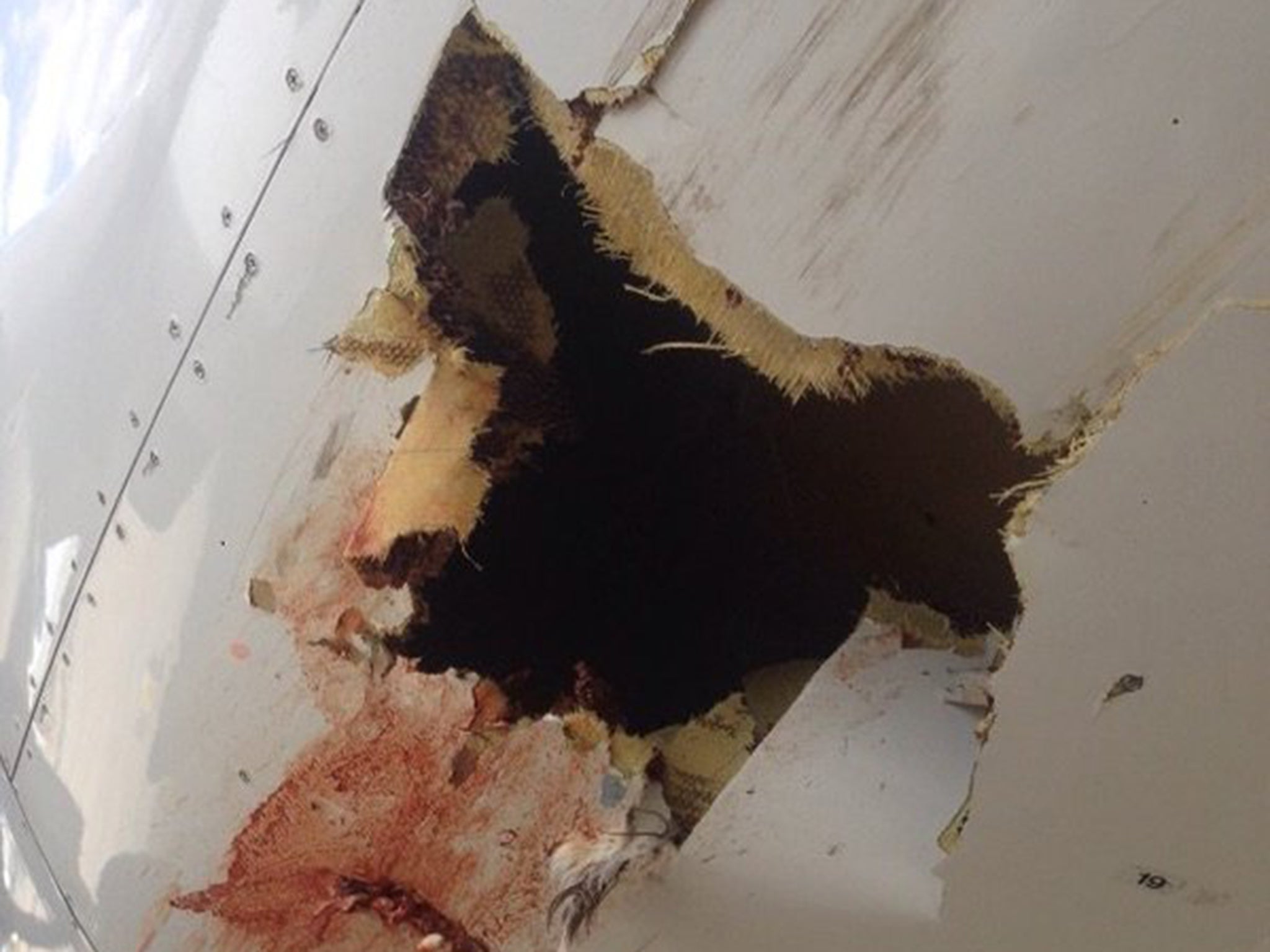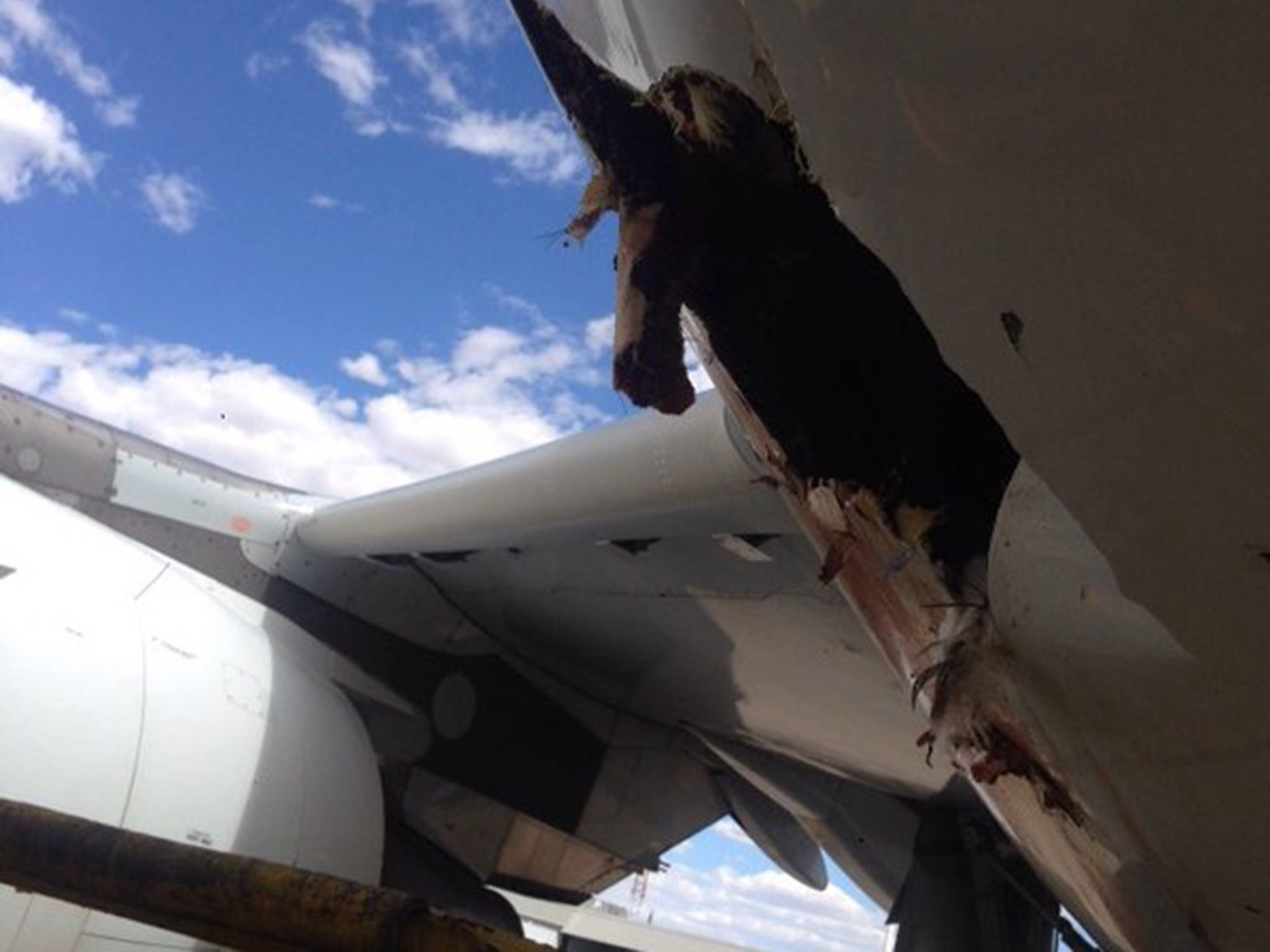Bird rips huge hole in underbelly of Air Namibia passenger plane
The aircraft, which was carrying 112 passengers, landed safely

A bird flew into the side of a plane as it landed with more than 100 passengers on board, ripping a large hole in the aircraft.
Pictures taken by passengers show smears of blood, black feathers, and significant damage to the underbelly of the Air Namibia A319-100.
The aircraft, which was carrying 112 passengers, landed safely following the incident on Thursday.
A spokesperson for Air Namibia told the Namibian national newspaper: “Bird strikes are common during landing and taking off of an aircraft because these are the times when the aircraft is flying in the ranges when the bird is also flying.
"A big bird hit one of our four A319-100 aircraft that services our regional routes just when it was about to land. It left one of the underbody panels of the aircraft damaged.”
Although bird strikes are common and do not usually impact on the safety of flights, the Birdstrike Committee USA says bird and other wildlife strikes to aircraft result in over $600 million in damage to US civil and military aviation each year.
Airports understand that bird strikes can be common, and employ various methods to keep them away - including bird control patrols, and using noises, lasers, and clappers on the airfields.
A Heathrow spokesperson said the airport aimed to protect passengers from birdstrikes,
"We have dedicated teams who constantly patrol 24/7 to inspect the runways and disperse any birds who pose a risk of a bird strike to aircraft landing or taking off," the spokesperson said.

"Their duties also include maintaining an environment that deters birds or any other wildlife such as ensuring the grass on the airfield is kept at a particular length to make it inhabitable for birds to prevent them settling.”
Last year, a bird hit a Turkish Airlines plane upon landing in Nevsehir, causing the plane’s nose to buckle.
A spokesperson for Turkish Airlines explained to the Mailonline why the damage to the Turkish Airlines plane was so great.
“The damage of the nose area (radome) by bird hit is a common incident on civil aeronautical operations," they said.
"The radome area of a plane is constructed by soft materials (composit) to minimise the impact of such hits.”
Join our commenting forum
Join thought-provoking conversations, follow other Independent readers and see their replies
Comments